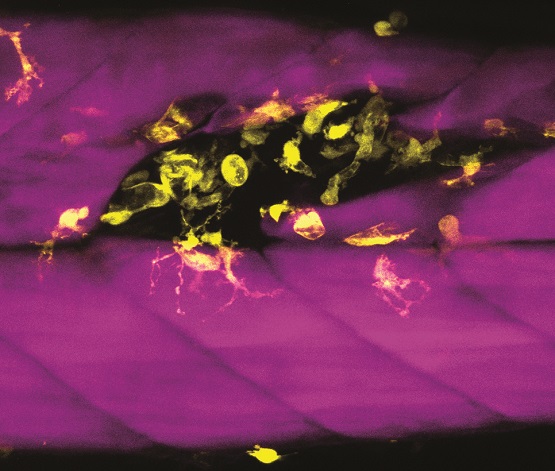 A discovery by Australian scientists may lead to faster recovery from muscle injuries and prevention of sarcopenia and related muscle wasting diseases.
A discovery by Australian scientists may lead to faster recovery from muscle injuries and prevention of sarcopenia and related muscle wasting diseases.
When muscles are damaged, whether from day-to-day activities, over-exercise, or from muscle wasting diseases such as muscular dystrophy, stem cells are normally activated to repair the damage and regenerate healthy tissues. Unfortunately, with advancing age our stem cells lose their ability to work well, gradually leading to the loss of muscle mass and contributing to age-related weakness, frailty and balance issues linked to the increased prevalence of injury or death from falls in older adults.
Muscle stem cells are the invisible engines that drive tissue growth and repair. But growing these cells in the lab and then using them to therapeutically replace damaged muscle has been frustratingly difficult.
Researchers at the Australian Regenerative Medicine Institute at Monash University in Melbourne, Australia have discovered how a naturally occurring protein, nicotinamide phosphoribosyltransferase, or NAMPT, plays an important role in activating muscle stem cells to proliferate and heal. In a mouse model of severe muscle damage, injections of this protein led to the complete regeneration of muscle and the return of normal movement after severe muscle trauma.
The scientists, led by Professor Peter Currie, Director of Monash University’s Australian Regenerative Medicine Institute, studied the regeneration of skeletal muscle in zebrafish. Zebrafish are fast becoming the go-to animal model for the study of stem cell regeneration because they are quick to reproduce and share at least 70 percent of their genes with humans. Zebrafish are also transparent, which allows the scientists to witness the actual regeneration in living muscle.
By studying the cells that migrate to a muscle injury in these fish the scientists identified a group of immune cells, called macrophages, which appeared to have a role in triggering the muscle stem cells to regenerate.
“What we saw were macrophages literally cuddling the muscle stem cells, which then started to divide and proliferate. Once they started this process, the macrophage would move on and cuddle the next muscle stem cell, and pretty soon the wound would heal.”
Macrophages are the cells that flock to any injury or infection site in the body, removing debris and promoting healing. “They are the clean up crew of the immune system,” Professor Currie said.
It has long been thought that two types of macrophages exist in the body: those that move to the injury rapidly and remove debris, and those that come in slower and stick around doing the longer term clean-up.
The research team, however, found that there were in fact eight genetically different types of macrophages in the injury site, and that one type, in particular, was the “cuddler”.
Further investigation revealed that this affectionate macrophage released a substance called NAMPT. By removing these macrophages from the zebrafish and adding the NAMPT to the aquarium water the scientists found they could stimulate the muscle stem cells to grow and heal – effectively replacing the need for the macrophages.
Importantly recent experiments placing a hydrogel patch containing NAMPT into a mouse model of severe muscle wasting led to what Professor Currie called “significant” replacement of the damaged muscle.
The researchers are now in discussions with a number of biotech companies about taking NAMPT to clinical trials for the use of this compound in the treatment of muscle disease and injury.
Image: Ratnayak-et-al-2021_Macrophage-response-to-muscle-injury
Source: Read the full paper in Nature titled: Macrophages provide a transient muscle stem cell miche via NAMPT secretion.DOI: 10.1038/s41586-021-03199-7











